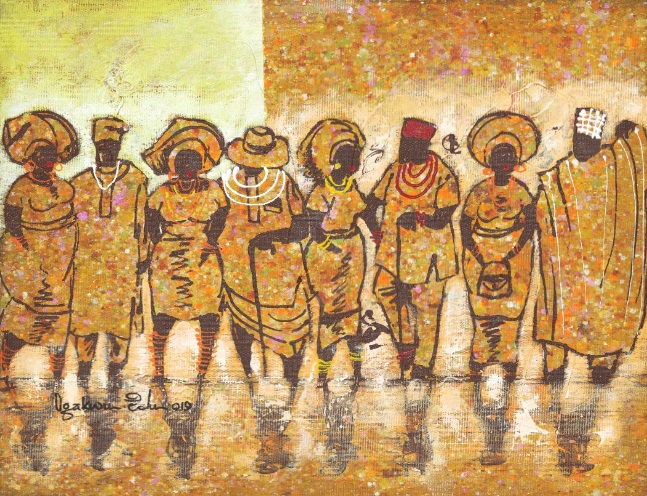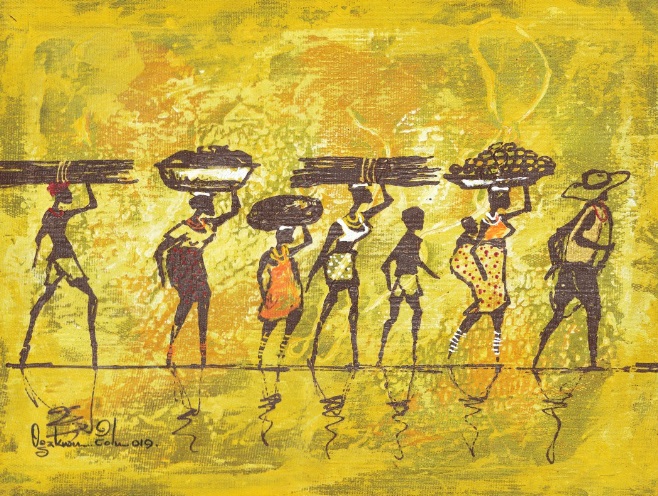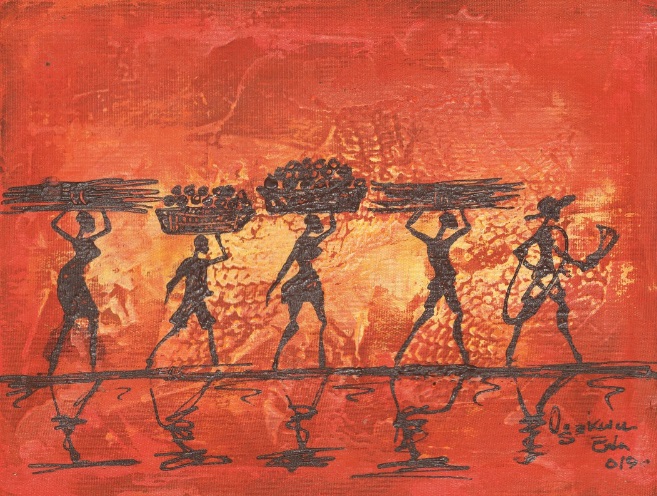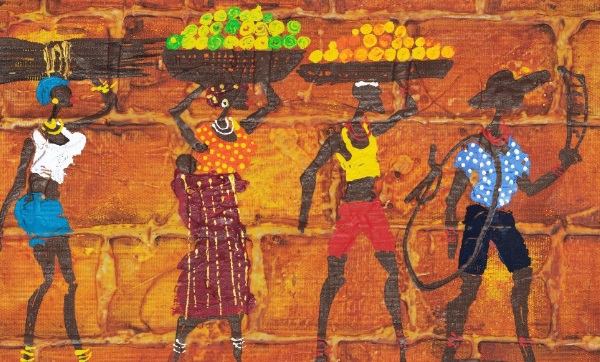Artists and creative people’s voices are assumed to be the voice of the landscape and the social settings of a time and space. Artists and writers knowingly or unknowingly use a landscape’s territorial element, reflected in their works, like as a skeleton or armature of a design. Because of this, scholars use artwork and literature to research the history of the landscape and the changes that occurred in that landscape.
Chinedu Ogakwu is a contemporary artist from Nigeria who is celebrated most in African art and brings treasured things from an untried terrain with wonder. African painters always get the world of colours that carry them into their land’s naturalistic realities and dreams, which make their life more ambiguous and novel. Ogakwu’s works maintained a phase of representing an unreal world in a tangible medium, from a cultural heritage of a great civilisation and African soil itself.

Ogakwu’s media renditions of and about the colourful African dreams and desires are represented in textures of a mixed medium. Ogakwu took away the detail of the depicted objects/subjects and narrated them as a symbol of ambiguous subjectivity. His capricious employment of forms and combinations of abstract physiques of the people, the colour of their dreams, scale, and viewpoint asks how the spectator processes visual information through his artworks.

For most artists, childhood is the treasure of memory and the formation moments of their lives. In some of the works, Chinedu Ogakwu recalls childhood memory and events that are imprinted in his life eternally. The farm series exemplifies the artist’s rememberings of childhood memory and how it visually assembled as an abstract ancestry. Farming is his family income and significant activity, which is part of an artist’s childhood daily life. Most of his artworks are reflections of his boyhood and the memory that made him an artist.

People, mainly women from the village, went to the farm with baskets on their heads, the typical visual in the artist’s life. Mostly they planted yam, and after the crops were planted, women visited the farm to remove the weeds, and they picked fruits or vegetables while returning to the village for household purposes or to sell. Those activities are lifelike visuals engraved in anyone’s visual memory. Farming is a cycle of exercise, the most nostalgic element in Chinedu Ogakwu’s works.
The cultural diversity of Nigeria a reflected in Chinedu Ogakwu’s works. And the reflection of the works is not a mere reflection of the subjects but of the subjects’ memory. When we look at the abstract reflections in the paintings,
Chinedu Ogakwu is also known for his depiction of women. He says, “Unique creatures especially loved by God”, he calls them. Rupi Kaur described them perfectly as water soft enough to offer life and tough enough to drown the same life away. Have you ever imagined a day without them? A dance without them? A feast without them? Mentioned in Google Art and Culture.
Credit: Google Art and Culture

Krispin Joseph PX, a poet and journalist, completed an MFA in art history and visual studies at the University of Hyderabad.





